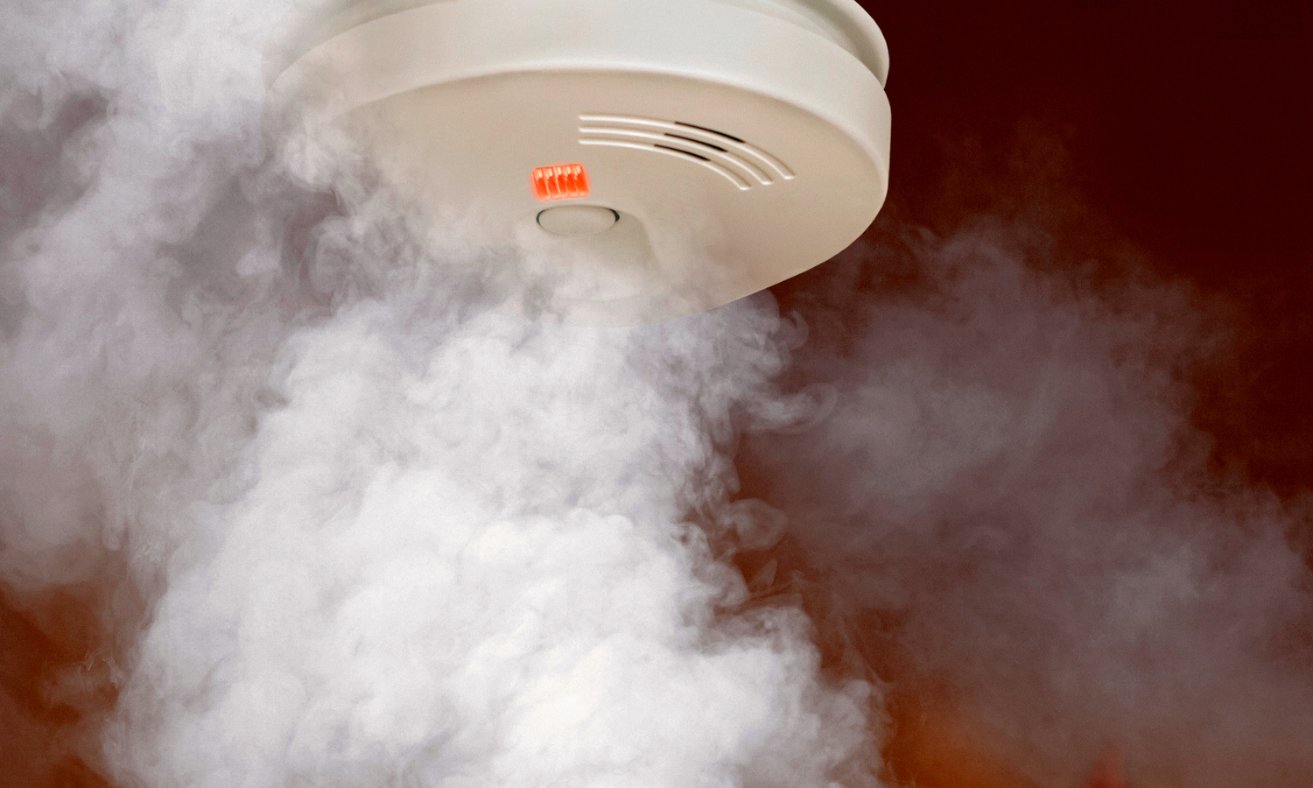

Articles
How Does An Ionization Smoke Detector Work?
Modified: January 24, 2024
Learn how ionization smoke detectors work and understand the importance of these devices in keeping your home safe. Read our informative articles now!
(Many of the links in this article redirect to a specific reviewed product. Your purchase of these products through affiliate links helps to generate commission for Storables.com, at no extra cost. Learn more)
Introduction
An ionization smoke detector is an essential safety device that is designed to detect smoke particles in the air and alert individuals of a potential fire hazard. This advanced technology plays a crucial role in safeguarding homes, offices, and public spaces by providing early warning signals in the event of a fire.
In this article, we will delve into the inner workings of an ionization smoke detector, exploring its components and the science behind its operation. By understanding the mechanics of these detectors, you will gain a better appreciation of their importance and why they are a vital part of every fire safety system.
So, what exactly is an ionization smoke detector, and how does it work? Let’s find out.
Key Takeaways:
- Ionization smoke detectors excel in detecting fast-burning, flaming fires, providing early warning signals. However, they may be less effective in detecting slow, smoldering fires, requiring a combination with photoelectric smoke detectors for comprehensive coverage.
- Understanding the components and limitations of ionization smoke detectors is crucial for informed fire safety decisions. Regular maintenance and compliance with regulations ensure optimal functionality and enhance overall fire detection coverage.
Read more: What Is An Ionization Smoke Detector?
What is an Ionization Smoke Detector?
An ionization smoke detector is a type of smoke alarm that utilizes ionization technology to detect the presence of smoke in the surrounding environment. It is one of the two major types of smoke detectors, the other being photoelectric smoke detectors. While both types are effective in detecting smoke, ionization smoke detectors excel in detecting fast and flaming fires.
Ionization smoke detectors consist of several key components, including an ionization chamber, a radiation source, and an alarm system. The ionization chamber houses a small amount of radioactive material, usually Americium-241, which emits alpha particles. These alpha particles ionize the air inside the chamber, creating a steady flow of electrically charged particles.
When smoke particles enter the ionization chamber, they disrupt the flow of the charged particles, causing a decrease in the ionization current. This change in current is detected by the alarm system, which triggers an audible alarm to alert occupants of the potential fire.
Ionization smoke detectors are particularly effective in detecting fires characterized by fast-burning flames and minimal smoke. They are commonly installed in areas such as kitchens, living rooms, and hallways, where flaming fires are more likely to occur.
Although ionization smoke detectors are highly reliable in detecting certain types of fires, it is important to note that they may be less effective in detecting slow, smoldering fires that produce a thick smoke. In such cases, photoelectric smoke detectors are often used in conjunction with ionization detectors to provide comprehensive fire detection coverage.+
Components of an Ionization Smoke Detector
An ionization smoke detector consists of several essential components that work together to ensure accurate smoke detection and alarm activation. Understanding these components will give you a deeper insight into how the detector operates and fulfills its function effectively:
- Ionization Chamber: The ionization chamber is the core component of the smoke detector. It contains a small amount of radioactive material, such as Americium-241, which emits alpha particles. The chamber is designed to allow air to flow through it, creating a balanced electrical charge in its normal state.
- Radiation Source: The radioactive material present in the ionization chamber serves as the radiation source. The emitted alpha particles continuously ionize the air inside the chamber, creating a continuous flow of electrically charged particles.
- Air Ventilation System: The smoke detector is equipped with an air ventilation system that allows the air to freely circulate through the ionization chamber. This helps in facilitating the detection of smoke particles and maintaining the correct balance of electrical charges inside the chamber.
- Electrodes: The electrodes in the ionization chamber are responsible for detecting any changes in the electrical charge caused by the presence of smoke particles. These electrodes are strategically positioned to measure the ionization current within the chamber.
- Alarm System: The alarm system is the final component of the ionization smoke detector. It is designed to trigger the audible alarm when a significant decrease in the ionization current is detected, indicating the presence of smoke. The alarm system may also include visual indicators, such as flashing lights, to further alert individuals of a potential fire.
These components work harmoniously to ensure the effective functioning of an ionization smoke detector. When smoke enters the ionization chamber, it disrupts the flow of charged particles, resulting in a decrease in the ionization current. This change triggers the alarm system, sounding the alarm to notify occupants of the potential fire hazard.
It’s worth noting that regular maintenance and periodic testing of these components are necessary to ensure the proper operation of the ionization smoke detector and to maintain its reliability in detecting smoke.
Working Principle of an Ionization Smoke Detector
The working principle of an ionization smoke detector is based on the ionization chamber’s ability to sense smoke particles and trigger an alarm. Here’s a step-by-step breakdown of how an ionization smoke detector operates:
- Ionization Chamber: The ionization chamber in the smoke detector contains a tiny amount of radioactive material, usually Americium-241. This material emits alpha particles, which ionize or charge the air molecules inside the chamber.
- Ionization Process: As the alpha particles collide with the air molecules, they knock off electrons, creating positive ions and free electrons. This ionization process establishes a flow of charged particles inside the chamber.
- Steady State: In the absence of smoke or other airborne particles, the flow of charged particles remains balanced and stable. This results in a steady ionization current within the chamber, indicating normal conditions.
- Smoke Detection: When smoke enters the ionization chamber, the smoke particles disrupt the normal flow of charged particles. The smoke particles attach themselves to the ions, reducing the flow of charged particles in the chamber.
- Decrease in Ionization Current: The presence of smoke causes a decrease in the ionization current within the chamber. This change in current is detected by the electrodes within the smoke detector.
- Alarm Activation: When a significant decrease in the ionization current is detected, the smoke detector’s alarm system is triggered. This activates an audible alarm, notifying occupants of the potential fire hazard.
The ionization smoke detector has been optimized to be highly sensitive to the small particles produced by fast-burning, flaming fires. This sensitivity enables it to provide an early warning in such scenarios, allowing individuals to take immediate action and evacuate if necessary.
It’s important to note that ionization smoke detectors are not effective at detecting slow, smoldering fires that produce more substantial smoke particles. For comprehensive fire detection coverage, a combination of ionization smoke detectors and photoelectric smoke detectors is often recommended.
Regular maintenance and periodic testing of ionization smoke detectors are crucial to ensure their proper functioning. This includes checking and replacing the batteries, cleaning the detector to remove any dust or debris, and following the manufacturer’s guidelines for maintenance and testing.
Ionization Chamber
The ionization chamber is a critical component of an ionization smoke detector. It is designed to house a small amount of radioactive material and plays a significant role in the detection of smoke particles. Let’s explore the ionization chamber in more detail:
The primary purpose of the ionization chamber is to create an environment that allows for the ionization of air molecules. Inside the chamber, a small radioactive material, typically Americium-241, is present. This radioactive material emits alpha particles, which are positively charged particles consisting of two protons and two neutrons.
When the alpha particles are released from the radioactive material, they collide with and ionize the air molecules present in the chamber. This ionization process involves knocking off electrons from the air molecules, resulting in the formation of positively charged ions and free electrons. As a result, the air inside the chamber becomes ionized or electrically charged.
The ionization chamber is designed with electrodes strategically placed within it. These electrodes are responsible for detecting and measuring the ionization current, which is the flow of charged particles within the chamber. In normal conditions, when there are no smoke particles present, the ionization current remains at a relatively constant level.
However, when smoke enters the ionization chamber, the smoke particles attach themselves to the ions and free electrons, causing a disruption in the flow of charged particles. This disruption leads to a decrease in the ionization current, which is detected by the electrodes.
It is this decrease in the ionization current that triggers the alarm system of the ionization smoke detector, signaling the presence of smoke and potential fire. The alarm system then activates an audible alarm, warning individuals in the vicinity to take precautionary measures and evacuate if necessary.
It is important to note that the radioactive material used in ionization smoke detectors is carefully chosen and encapsulated to ensure the safety of occupants. The level of radiation emitted by these detectors is extremely low and poses no significant health risks to individuals in normal usage scenarios.
Regular maintenance and periodic cleaning of the ionization chamber are essential to ensure the proper functioning of the ionization smoke detector. This includes removing any debris or dust that may accumulate inside the chamber, as well as following the manufacturer’s guidelines for maintenance and testing.
An ionization smoke detector works by using a small amount of radioactive material to ionize the air inside the detector. When smoke enters, it disrupts the ionization process, triggering the alarm. Keep in mind that ionization detectors are best for detecting fast, flaming fires.
Read more: How Does A Smoke Detector Work?
Radiation Source
The radiation source is a crucial component of an ionization smoke detector. It is responsible for emitting alpha particles, which play a pivotal role in the ionization process within the detector’s ionization chamber. Let’s delve deeper into the radiation source and its significance:
The radioactive material used as the radiation source in ionization smoke detectors is typically Americium-241 (Am-241). This material is chosen for its ability to emit alpha particles, which are highly charged particles consisting of two protons and two neutrons.
The radiation source is strategically placed within the ionization chamber of the smoke detector. It is encased within a protective material to prevent any direct contact with individuals or the external environment. This encapsulation ensures the safe and controlled emission of alpha particles.
As the Americium-241 undergoes radioactive decay, it emits alpha particles at a constant rate. These alpha particles are directed into the ionization chamber, where they collide with air molecules present in the chamber.
When the alpha particles collide with the air molecules, they possess enough energy to knock off electrons from the molecules, resulting in the process called ionization. This ionization of the air molecules creates a flow of charged particles within the ionization chamber.
The emitted alpha particles continuously ionize the air molecules, maintaining the steady flow of charged particles within the chamber in the absence of any smoke. It is this continuous flow of charged particles that allows the ionization smoke detector to establish a normal baseline for detecting any disruption caused by the presence of smoke particles.
It is important to note that the level of radiation emitted by the ionization smoke detector’s radiation source is extremely low and poses no significant health risks to individuals under normal circumstances. The encapsulation of the radioactive material ensures the safety of occupants while allowing for the efficient operation of the detector.
Regular maintenance and testing of the ionization smoke detector should be carried out according to the manufacturer’s guidelines. This includes checking the functionality of the radiation source and ensuring that it is emitting alpha particles at the appropriate levels for accurate smoke detection.
By understanding the role of the radiation source in an ionization smoke detector, we gain insight into its crucial contribution to the overall functionality of the device. The emitted alpha particles enable the ionization of air molecules within the chamber, setting the stage for effective smoke detection and alarm activation when smoke is present.
Alarm System
The alarm system is a vital component of an ionization smoke detector, responsible for alerting individuals of a potential fire hazard. Let’s explore the alarm system and its functionality in greater detail:
When smoke particles enter the ionization chamber of the smoke detector and disrupt the flow of charged particles, the alarm system is triggered. The alarm system consists of several elements working together to effectively notify occupants of the presence of smoke:
- Sounder: The sounder is the primary component of the alarm system and produces the audible alarm. Typically, it emits a loud and distinctive sound to capture the attention of individuals in the vicinity of the smoke detector. The sounder is designed to have sufficient volume and frequency to ensure that the alarm can be heard from various locations within a building.
- Visual Indicators: Many ionization smoke detectors are equipped with visual indicators, such as flashing lights or LED indicators, in addition to the audible alarm. These visual indicators provide a supplementary method of alerting individuals, particularly those with hearing impairments or in situations where the audible alarm may not be as effective, such as in loud environments or when individuals are asleep.
- Power Supply: The alarm system is powered by either a replaceable battery or a direct electrical connection. The power supply ensures that the system is operational at all times, even during power outages. It is crucial to regularly test the power supply and replace batteries as required to ensure the continuous functionality of the alarm system.
- Test Button: Ionization smoke detectors often feature a test button that allows users to manually test the functionality of the alarm system. Pressing the test button initiates a simulated alarm, enabling users to confirm that the alarm system is working correctly and that the sounder and visual indicators are functioning as intended.
- Hush Button: Some modern ionization smoke detectors may include a hush button, which allows users to temporarily silence the audible alarm. This feature is useful in situations where the smoke detector is triggered by cooking smoke, steam, or other non-hazardous conditions. The hush button typically silences the alarm for a set period, after which it automatically restores full functionality.
The alarm system of an ionization smoke detector is designed to promptly and effectively alert individuals of a potential fire. When the ionization current is disrupted due to the presence of smoke particles, the alarm system is activated, generating a loud audible alarm and potentially triggering visual indicators. These signals prompt individuals to take immediate action, including evacuating the premises and contacting emergency services.
Regular testing and maintenance of the alarm system, including the sounder, visual indicators, power supply, and testing buttons, are essential to ensure the proper functioning of the ionization smoke detector. This includes testing the audible alarm and visual indicators, replacing batteries as needed, and following the manufacturer’s recommended maintenance guidelines.
By understanding the alarm system’s role, we can appreciate its critical contribution to the overall effectiveness of an ionization smoke detector in providing early warning and potentially saving lives in the event of a fire.
Advantages of Ionization Smoke Detectors
Ionization smoke detectors offer several advantages that make them a popular choice for fire detection in various settings. These advantages include:
- Fast Response Time: Ionization smoke detectors are highly sensitive to small smoke particles produced by fast-burning, flaming fires. This sensitivity allows them to quickly detect smoke and trigger an alarm, providing early warning to occupants and allowing them to take immediate action.
- Cost-Effective: Ionization smoke detectors are generally more affordable compared to other types of smoke detectors, making them a cost-effective option for homeowners and businesses. Their affordability makes it easier for individuals to install multiple detectors throughout their properties, increasing the overall fire safety coverage.
- Compact Size: Ionization smoke detectors are typically compact and unobtrusive in design. They can be easily mounted on walls or ceilings without drawing too much attention. Their compact size also allows for easy installation in various areas, including bedrooms, living rooms, hallways, and kitchens.
- Effective in Detecting Flaming Fires: Ionization smoke detectors excel in detecting fast-burning, flaming fires that produce minimal smoke. These types of fires can occur in kitchens, where cooking accidents can lead to flare-ups and ignite nearby flammable materials. By quickly detecting these flames, ionization smoke detectors provide early warning to prevent the spread of fires.
- Wide Availability: Ionization smoke detectors are widely available in hardware stores, online retailers, and other outlets. Their widespread availability allows for easy access to these devices, making it convenient for individuals to equip their homes or businesses with reliable fire detection systems.
It is important to note that while ionization smoke detectors offer significant advantages, they do have limitations. They may be less effective in detecting slow, smoldering fires that produce a thick smoke. For comprehensive fire detection coverage, it is often recommended to use a combination of ionization smoke detectors and photoelectric smoke detectors.
Regular maintenance, including testing the functionality of the detectors, replacing batteries, and cleaning any dust or debris, is crucial to ensure the ongoing effectiveness of ionization smoke detectors. Following the manufacturer’s guidelines and local fire safety regulations will help ensure that the detectors are properly installed and maintained.
Considering the advantages of fast response time, affordability, compact size, effectiveness in detecting flaming fires, and wide availability, ionization smoke detectors continue to be a popular choice for providing early warning and enhancing fire safety in residential, commercial, and public settings.
Limitations of Ionization Smoke Detectors
While ionization smoke detectors have their advantages, it is important to acknowledge their limitations. Understanding these limitations can help individuals make informed decisions about their fire safety measures. Here are some key limitations of ionization smoke detectors:
- Less Effective with Smoldering Fires: Ionization smoke detectors may be less effective in detecting slow, smoldering fires that produce a thick smoke. Smoldering fires can occur in situations such as electrical malfunctions or improperly extinguished cigarettes. The small smoke particles generated by these fires may not quickly reach the ionization chamber, resulting in a delayed or insufficient response from the detector.
- False Alarms from Non-Hazardous Sources: Ionization smoke detectors can be sensitive to common household activities such as cooking or shower steam. This sensitivity can result in false alarms when there is no real fire hazard present. While nuisance alarms can be frustrating, it is important not to disable the detector or remove its batteries as this compromises overall fire safety.
- Radioactive Material: Ionization smoke detectors contain a small amount of radioactive material, typically Americium-241. While the level of radiation emitted by the detector is extremely low and not harmful in normal usage, there may be concerns regarding the proper disposal of these detectors at the end of their lifespan.
- Not Suitable for Certain Locations: Ionization smoke detectors may not be recommended in areas where potential false alarms are more likely, such as kitchens or bathrooms. In these locations, the use of photoelectric smoke detectors, which are more effective at detecting smoldering fires, may be preferred.
- Limited Coverage for Different Fire Types: Ionization smoke detectors are particularly effective in detecting fast-burning, flaming fires. However, they may not be as effective in detecting other types of fires, such as fires that start with smoldering materials or fires that emit little smoke initially. For comprehensive fire detection coverage, it is often recommended to use a combination of ionization and photoelectric smoke detectors.
It is essential to weigh these limitations against the advantages of ionization smoke detectors and consider the specific fire risks and needs of your environment. In some cases, a combination of ionization and photoelectric smoke detectors may be the best approach to ensure comprehensive fire detection coverage.
Regular maintenance, including testing, cleaning, and battery replacement, is critical to overcome some of these limitations and maintain the effectiveness of ionization smoke detectors. Adhering to local fire safety regulations and manufacturer’s guidelines will help ensure proper installation and operation of these devices.
By understanding the limitations of ionization smoke detectors, individuals can make informed decisions about their fire safety plans, considering alternative technologies or employing a combination of different types of smoke detectors to best suit their specific needs.
Conclusion
Ionization smoke detectors are invaluable tools in fire safety, providing an early warning system that can save lives and protect property. Their ability to quickly detect fast-burning, flaming fires makes them an essential component of any comprehensive fire detection system.
We have explored the components and working principle of an ionization smoke detector, understanding how the ionization chamber, radiation source, and alarm system work together to detect the presence of smoke and activate the alarm. The advantages of ionization smoke detectors include their fast response time, cost-effectiveness, compact size, effectiveness in detecting flaming fires, and wide availability.
However, it is important to recognize the limitations of ionization smoke detectors. They may be less effective in detecting slow, smoldering fires and can be prone to false alarms from non-hazardous sources. While ionization smoke detectors have been carefully designed and contained to ensure safety, some individuals may still have concerns about the presence of radioactive material.
Considering these factors, it is crucial to make informed decisions when it comes to fire safety. Depending on the specific environment and fire risks, a combination of ionization and photoelectric smoke detectors may provide the most comprehensive coverage.
Regular maintenance, including testing, cleaning, and battery replacement, is essential to ensure the proper functioning of ionization smoke detectors. Compliance with local fire safety regulations and manufacturer’s guidelines will guarantee the optimal operation of these devices.
In conclusion, ionization smoke detectors serve as vital tools in protecting lives and property from the dangers of fire. Their ability to detect fast-burning fires quickly is a testament to their effectiveness. However, it is crucial to consider their limitations and choose the proper combination of smoke detectors to ensure maximum fire detection coverage. By doing so, individuals can enhance their fire safety measures and provide a safer environment for themselves and those around them.
Frequently Asked Questions about How Does An Ionization Smoke Detector Work?
Was this page helpful?
At Storables.com, we guarantee accurate and reliable information. Our content, validated by Expert Board Contributors, is crafted following stringent Editorial Policies. We're committed to providing you with well-researched, expert-backed insights for all your informational needs.
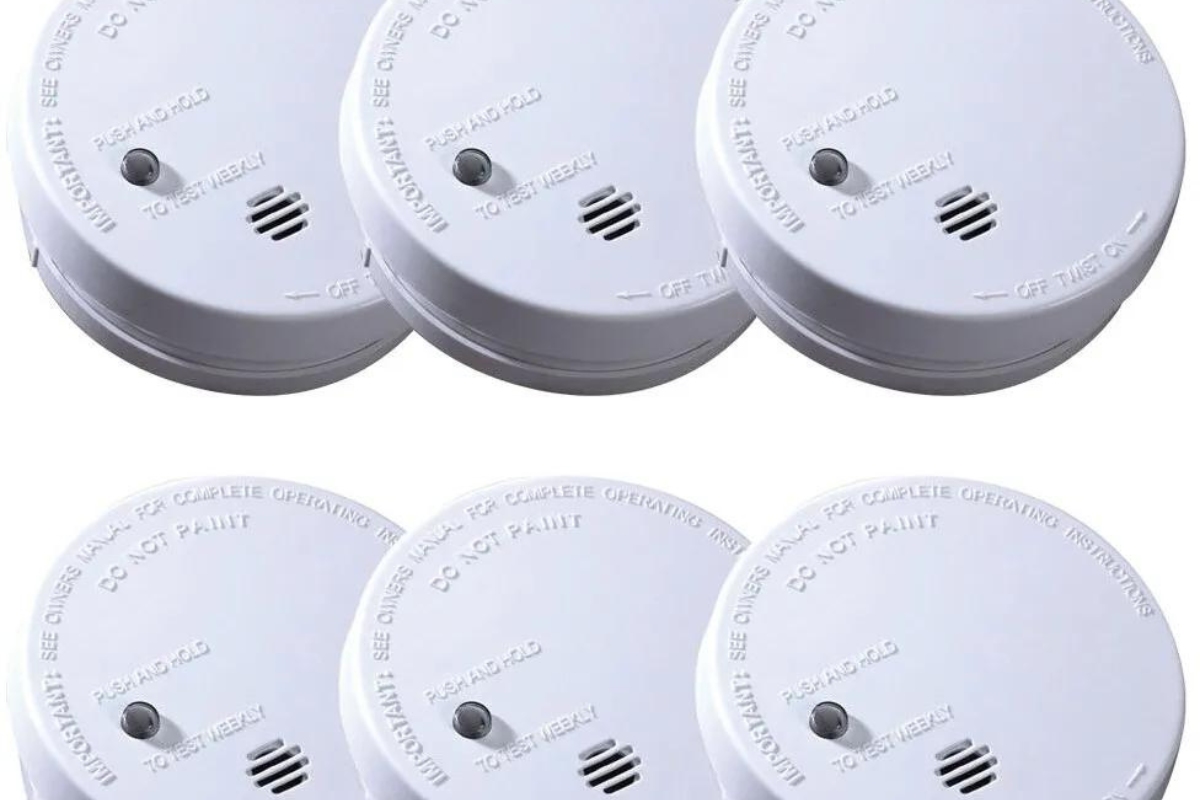
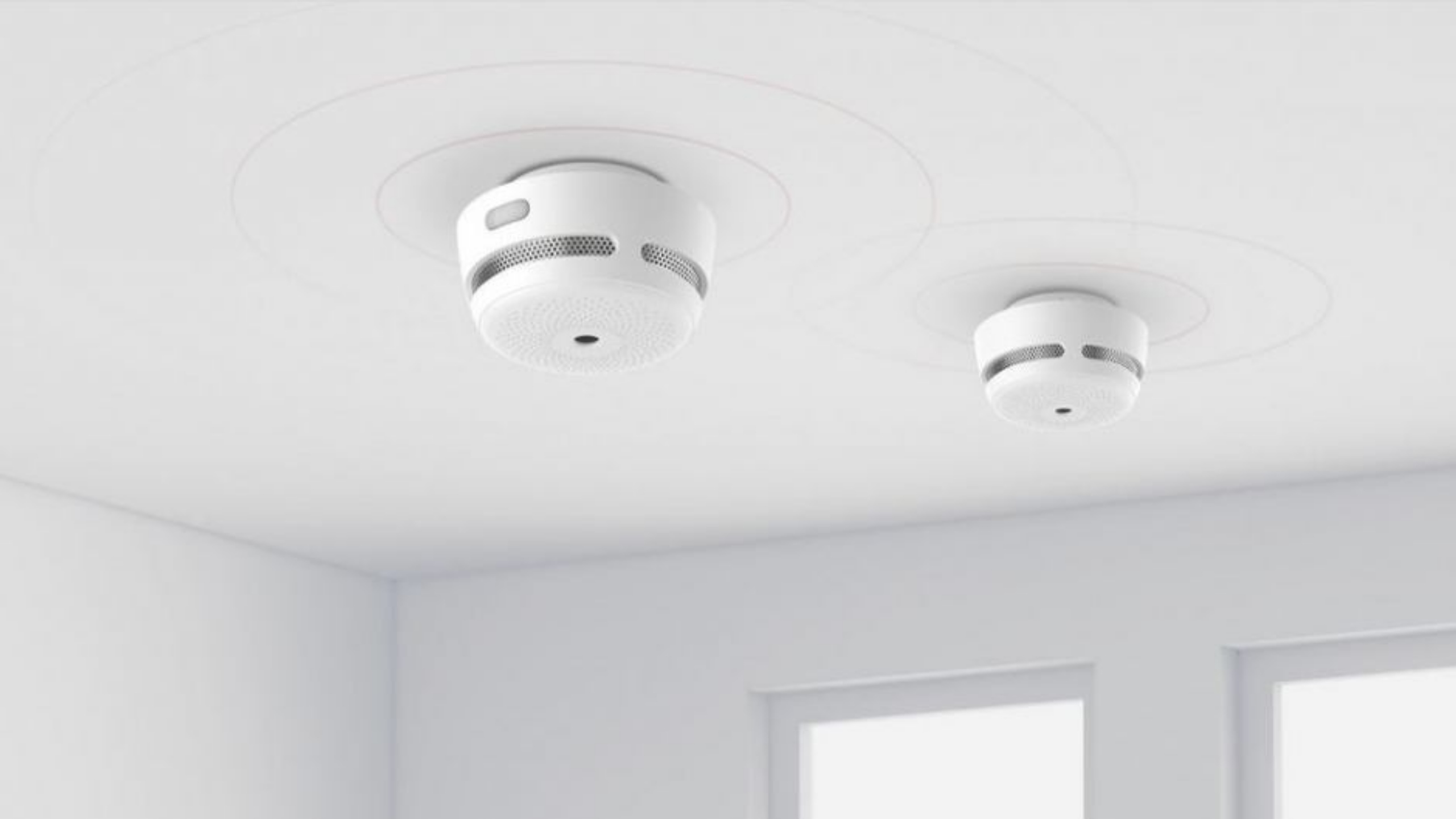
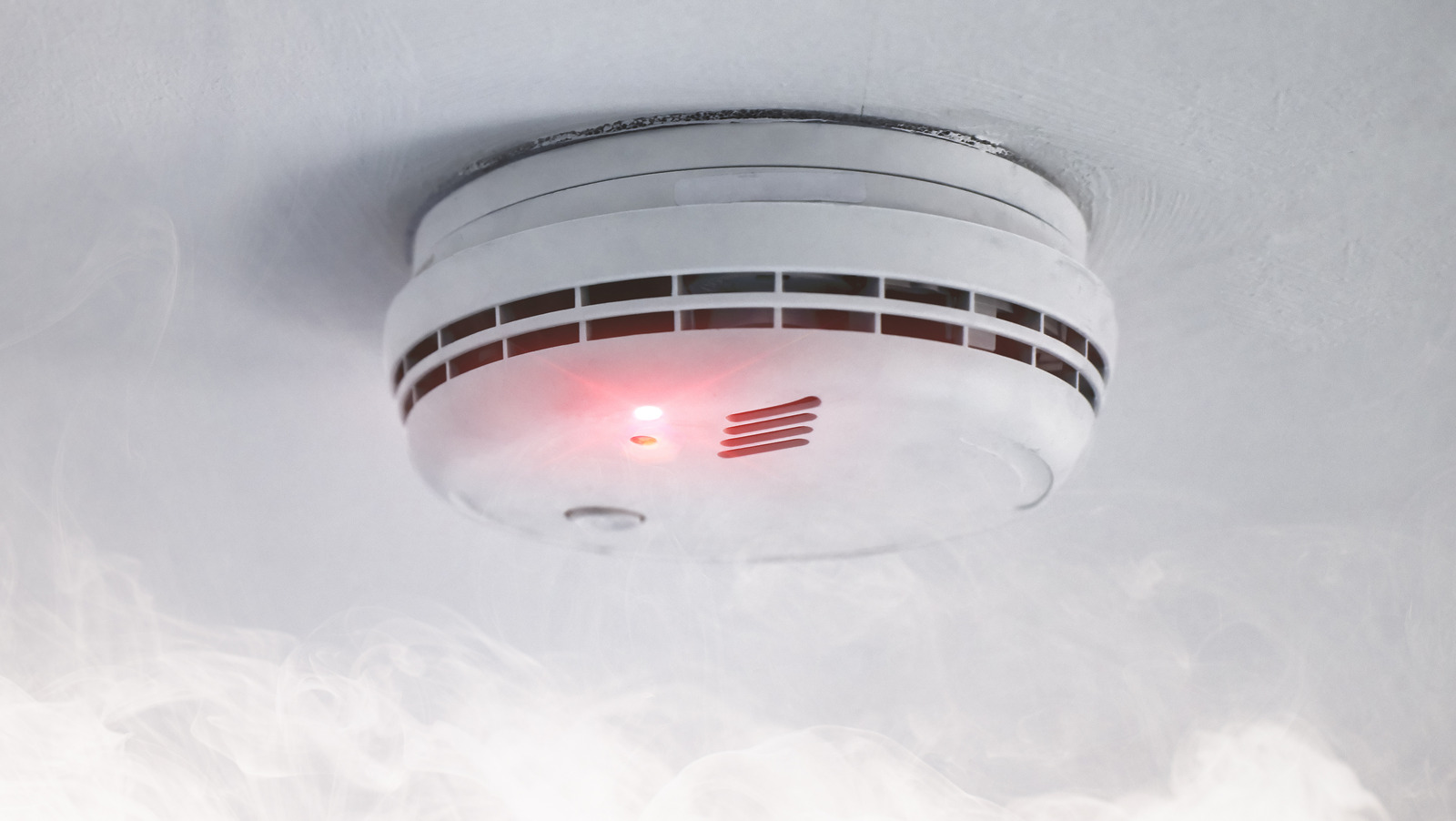
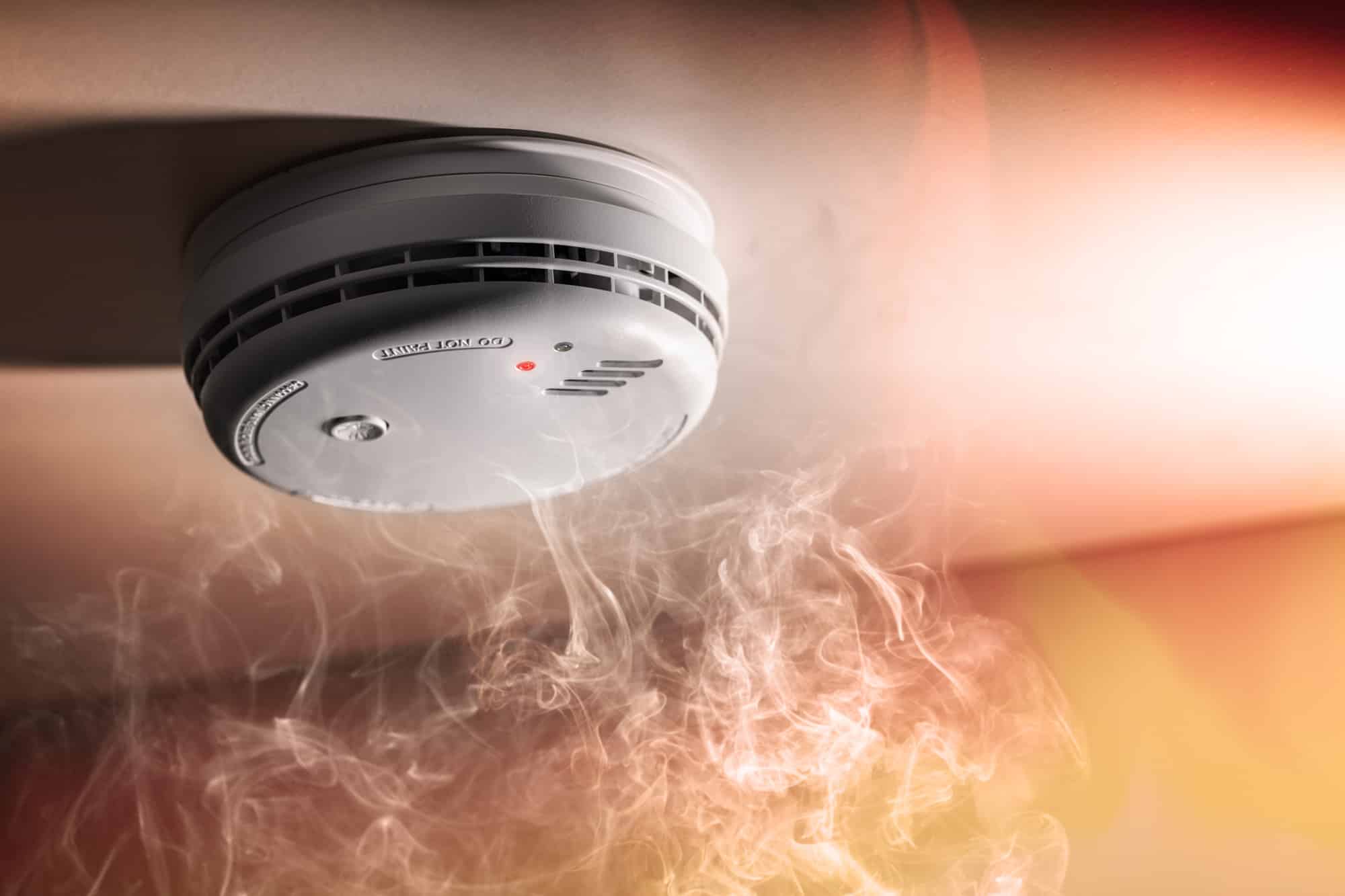
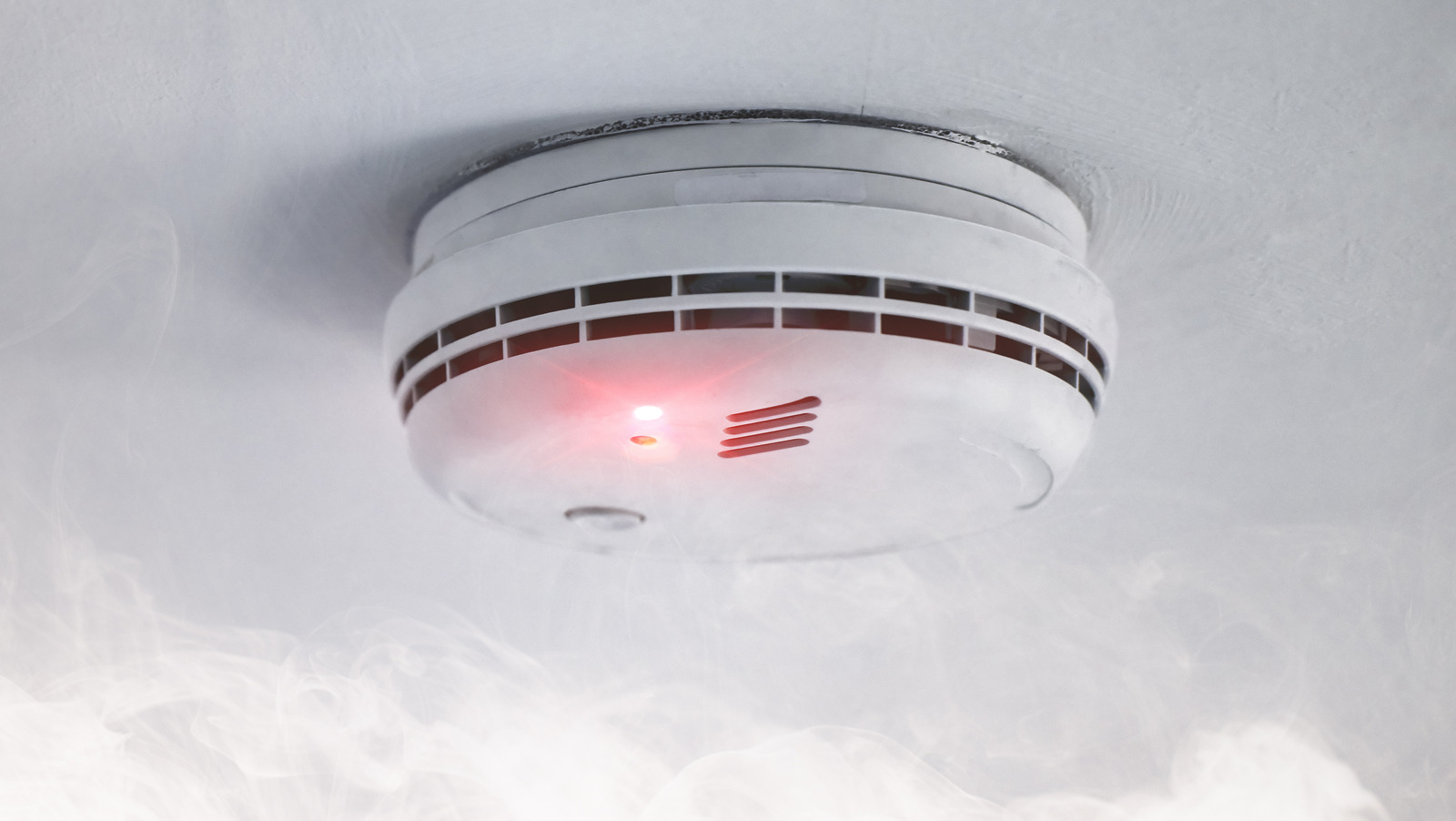

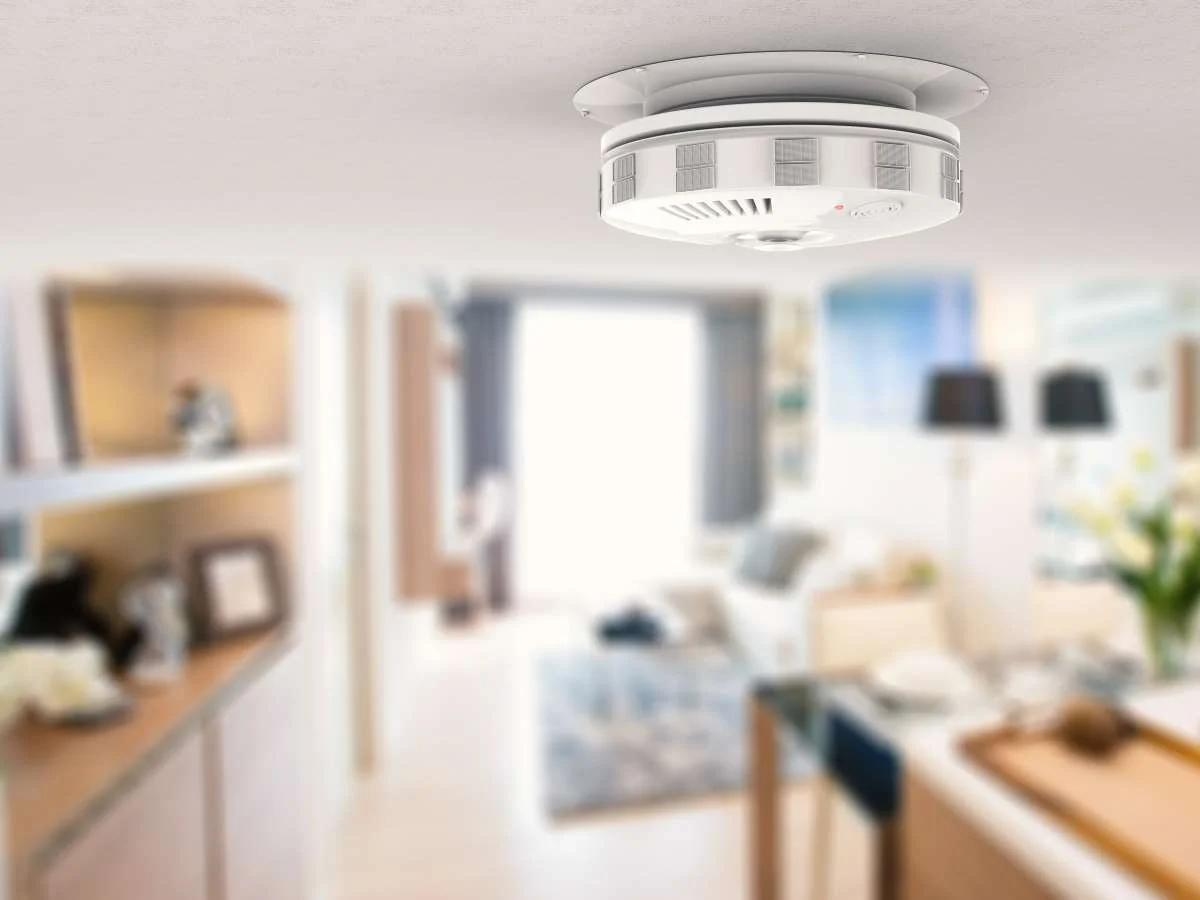
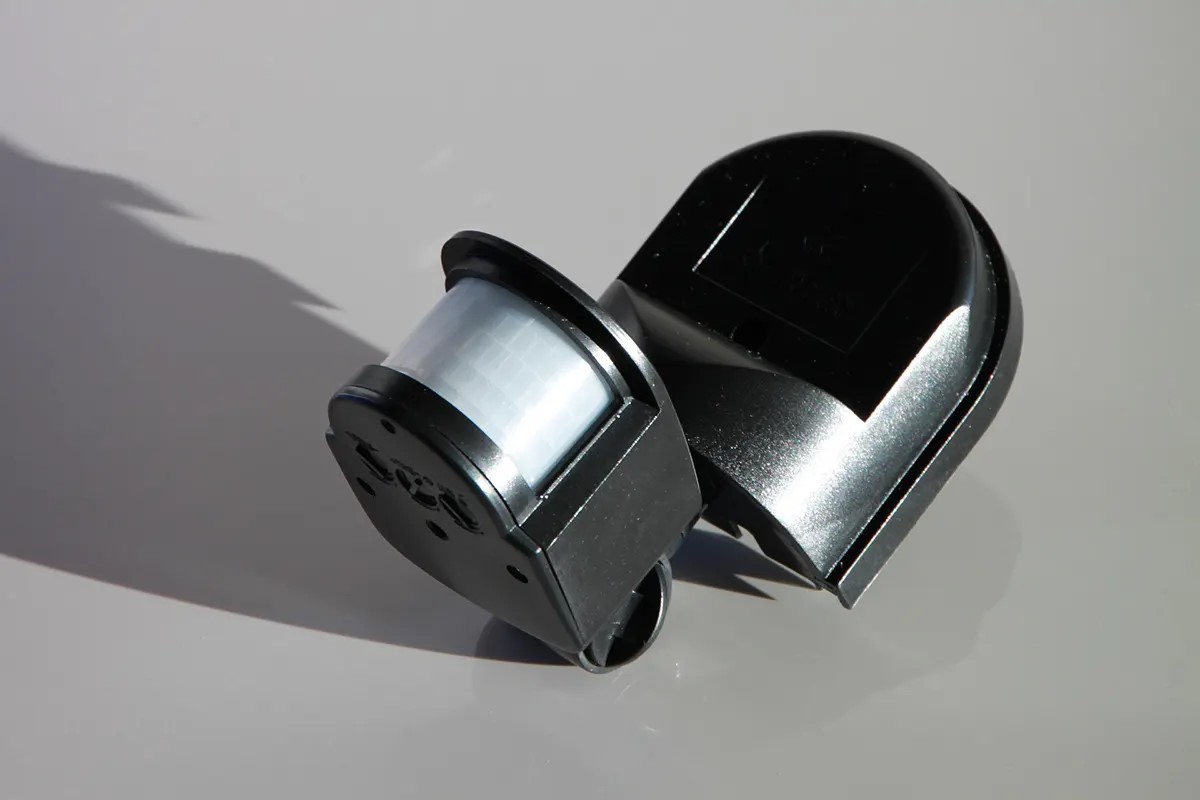
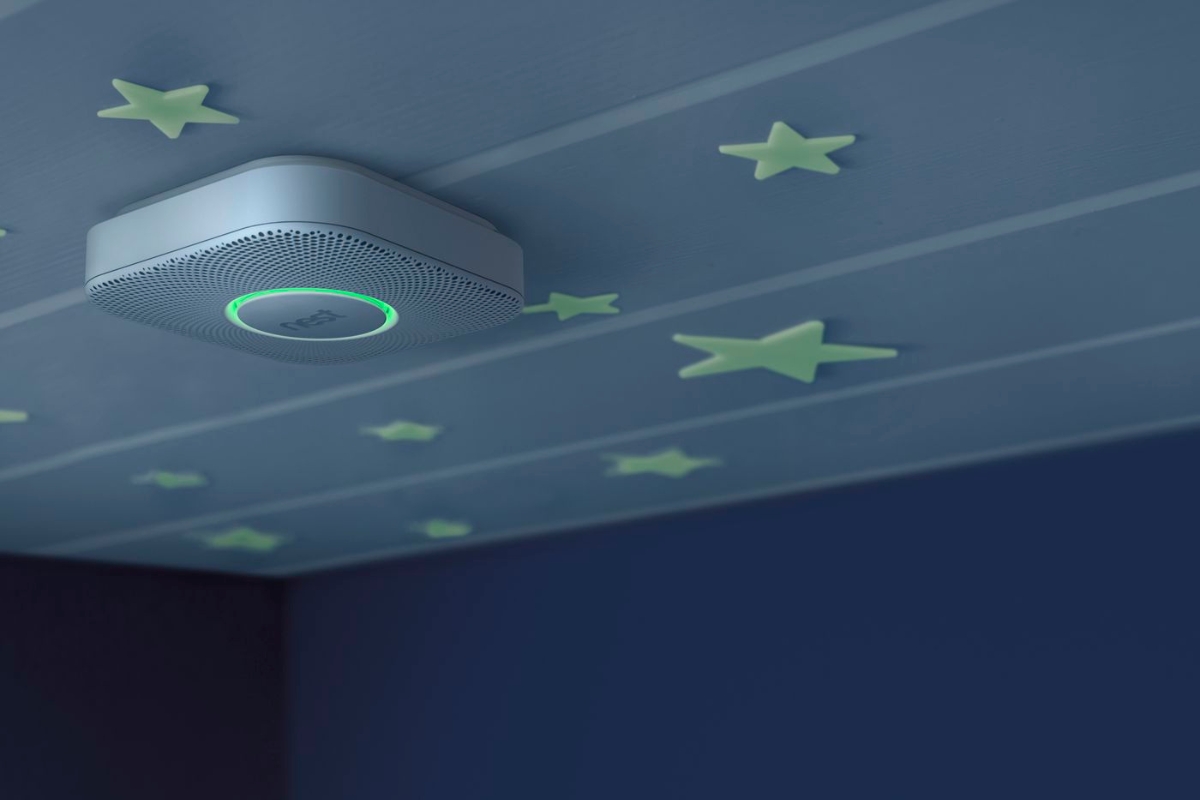
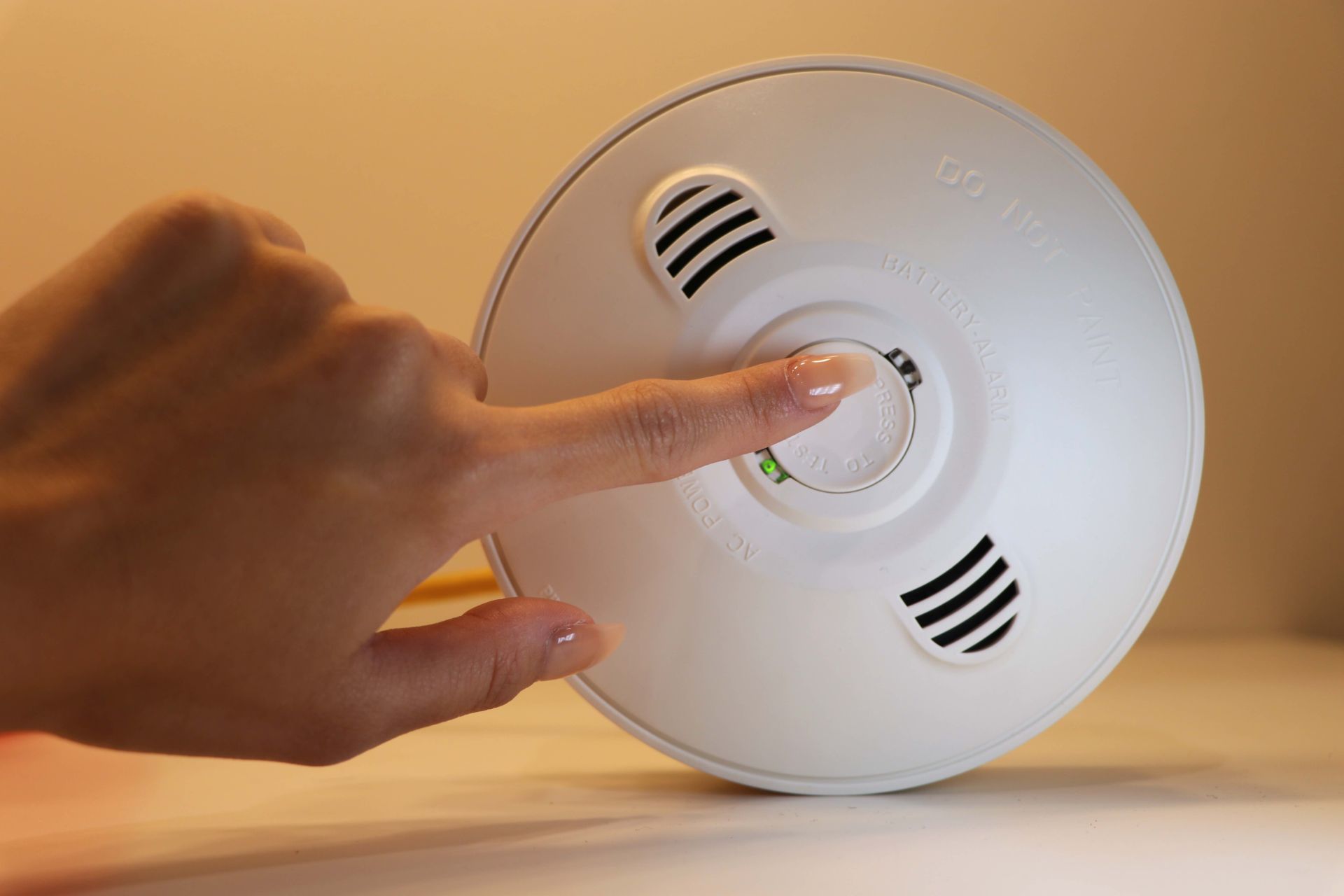
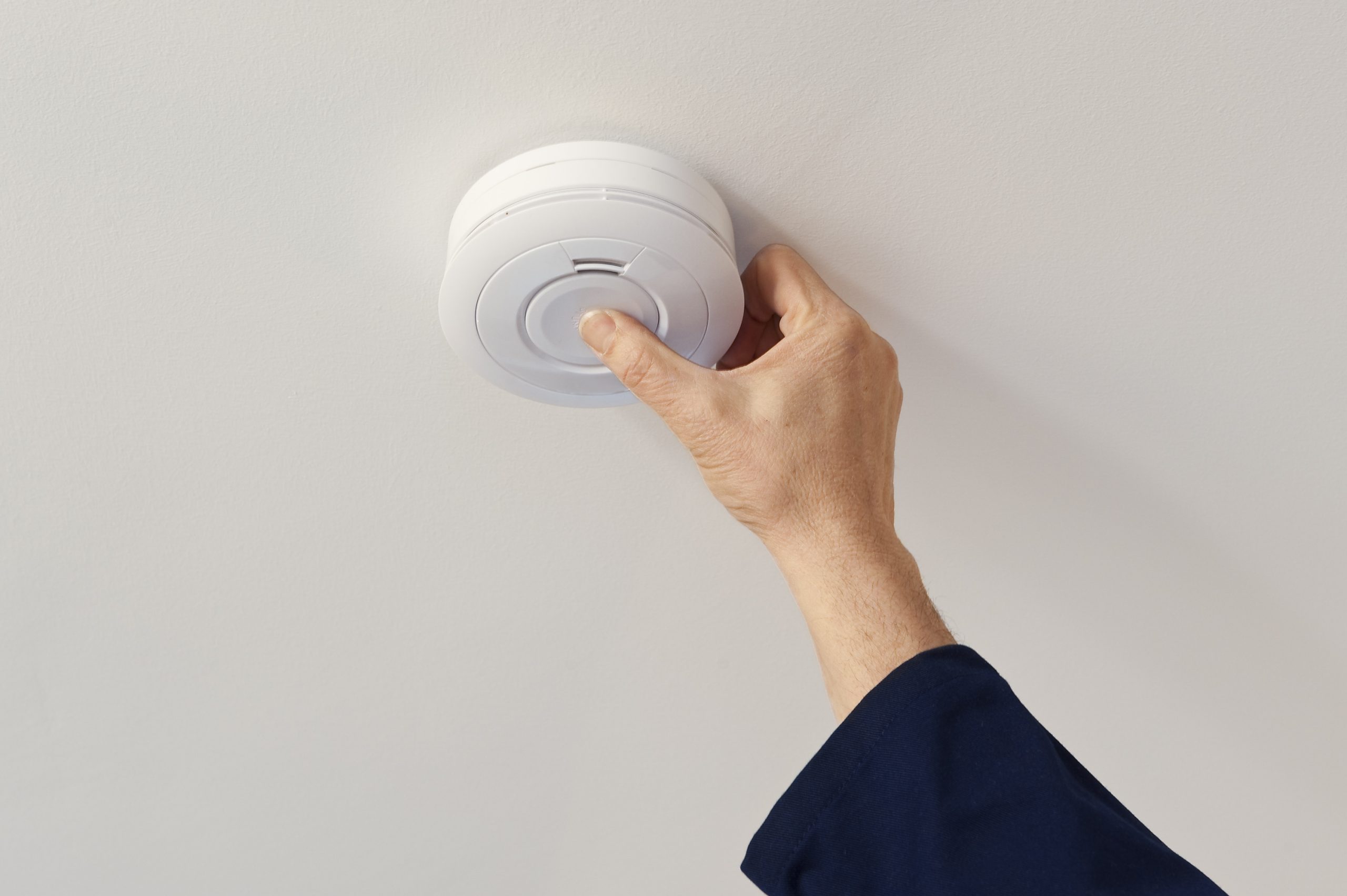
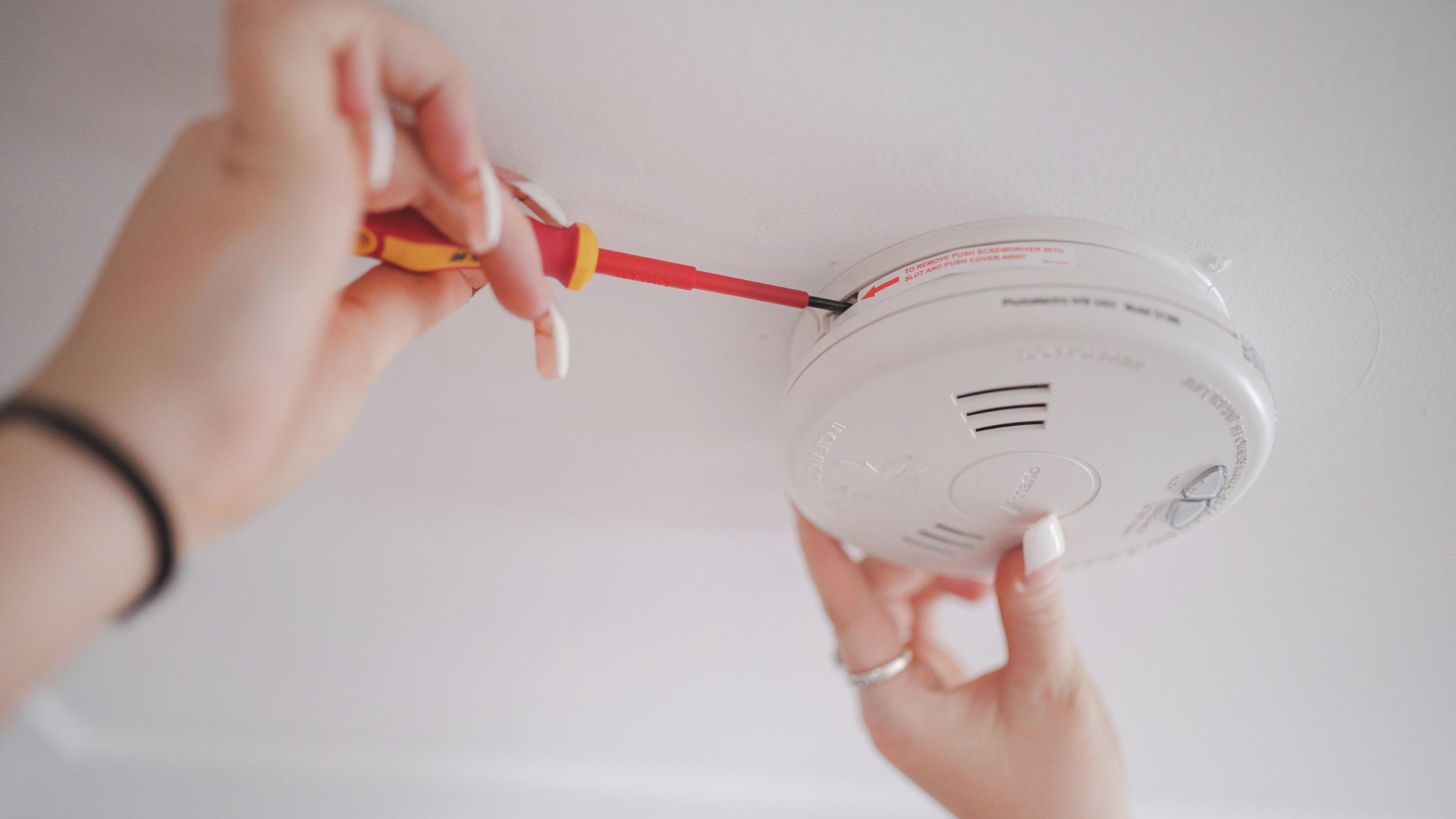
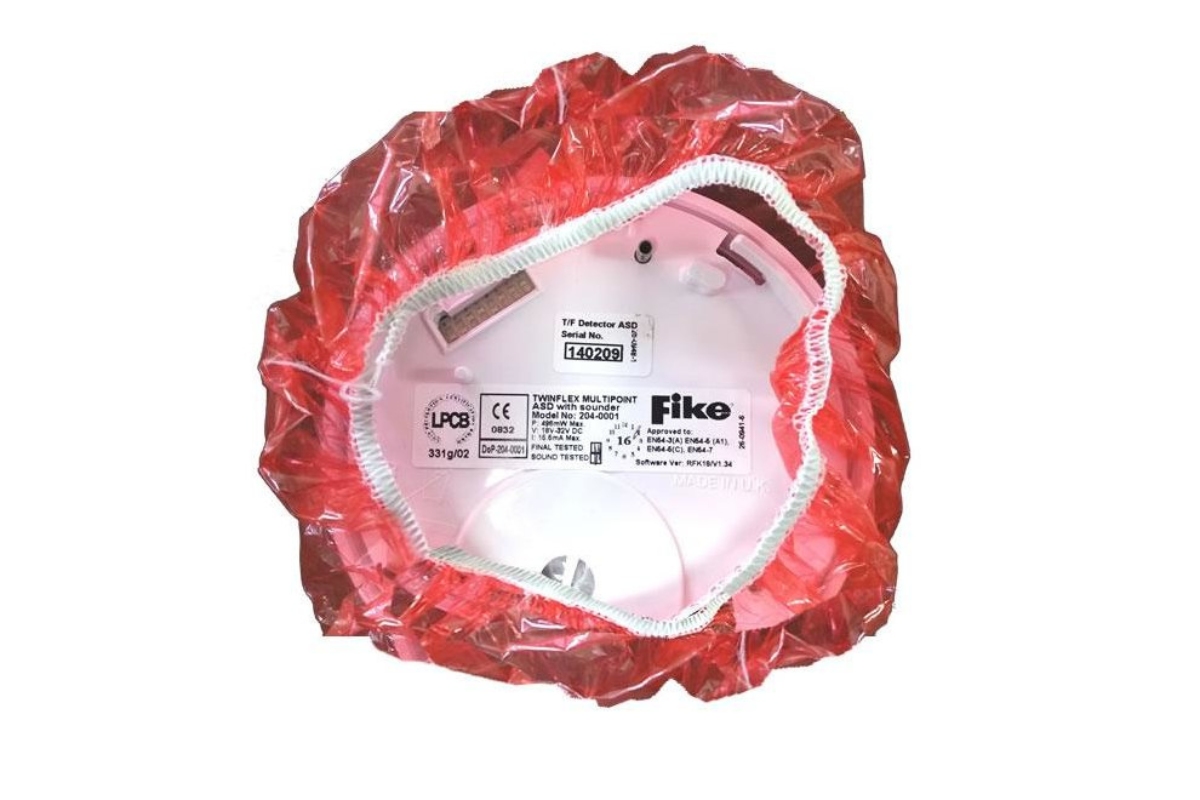

0 thoughts on “How Does An Ionization Smoke Detector Work?”